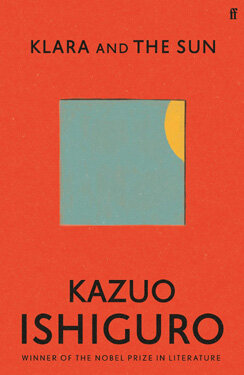As soon as I saw the online hype surrounding Patricia Lockwood's debut novel I knew I was out of touch with the internet. I wasn't even aware of Patricia Lockwood. *epic fail* Of course, whenever someone is trending who everyone seems to love but I've not heard of or couldn't recall I did the thing you're meant to do and googled her. The abbreviated biographical understanding I got from the succinct biography provided on wikipedia was that she first gained fame on twitter (having successfully baited publications like The Paris Review into joining in jokey banter), published two collections of poems as well as the poem “Rape Joke” which went viral in 2013 and the memoir “Priestdaddy” in 2017 which the Times included on its list “The 50 Best Memoirs of the Past 50 Years” and the Guardian named as one of its “100 Best Books of the 21st Century”. Oh, so I had heard of her! Or, at least, I saw mention of her on these lists and was intrigued but (like hundreds of other writers) haven't got around to reading her work yet. And so, I merrily plunged into reading Lockwood's “No One is Talking About This” because suddenly (at least within my online bubble) everyone seems to be talking about this debut novel.
This is a story about an online personality who has become so famous on platforms like twitter for tweets such as “Can a dog be twins?” that she travels around the world giving talks and lectures. The text is divided into brief sections which give an impressionistic sense of her life and the people within it without ever providing a completely clear picture. It's an intriguing and surprisingly poignant style of narrative similar to Jenny Offill's novels. Here Lockwood uses it to show how the internet has modified her narrator's sense of self to become both individual and collective. It's also reflective of the distracted attention span that comes from scrolling online and how concepts can be compressed down into crystallised pithy thoughts before being quickly abandoned for a new idea or trending discussion. This is a clever way of commenting upon the effects of the internet in the very structure of the way Lockwood tells her tale.
In the first section of the novel we get anecdotes and impressions about her travels and interactions from the virtual world to the real world as well as meditative asides about the meaning of our online lives versus our real lives. This amusingly expresses a lot of the existential angst and carnivalesque absurdity of our devotion to screens and the internet (which the narrator refers to as “the portal”). I loved how she captures the way this online existence has changed the way we use language as well as how it's reconfigured our psychology. Terms and phrases such as “shoot it in my veins”, “it me”, “toxic” and “normalize” have taken on specific meanings through their repeated use and become their own kinds of internet speak. Lockwood shows both the joy and frustration of this noting how if you don't keep up with this evolving speech you're quickly left out of the loop.
As someone who spends a lot of time online but doesn't feel like I fully understand what many people online take as collectively understood (such as who Patricia Lockwood is) I found it amusing and relatable how Lockwood describes the scramble to keep up with what's happening and what everyone is talking about. Sometimes her summary of the experience of online life movingly spills into the poetic: “Someone was dead, she had never met him, yet she had zoomed in on the texture of his injuries a dozen times, as she might squint at the pink of a sunset she was too lazy to meet outside. And that is what it was like.” This also shows how the tone of our experience is so chaotically jostled by what we witness while scrolling online. Our emotions can so rapidly veer from humour to grim fascination to heartfelt sympathy that we're left wondering what responsibility we possess to act or react. Lockwood richly expresses how the portal is an arena ripe with possibilities that can also feel like a hellish hamster wheel.
In the second section of the novel the narrator is called into action by her mother who summons her home. Her sister experiences complications with her pregnancy and gives birth to a girl with severe birth defects. The narrator undergoes a change in this section as her preoccupation with an online existence is often surrendered for her real world experiences with this uniquely beautiful girl. It's challenging to maintain a sardonic distance or distil meaning into glib humour when she's confronted with this luminous reality. Yet she still mediates much of her interactions through the filter of the curious ego that was formed within the portal and this creates a kind of crisis: “If all she was was funny, and none of this was funny, where did that leave her?” Though I hoped this second part of the novel would be an engaging reckoning with the narrator's struggle to recalibrate the value of herself and her actions I found it strangely flaccid. Perhaps Lockwood was trying to portray the difficulty of being caught in a habitual need to find the funny in framing every observation with cooly detached irony, but it mostly left me feeling unmoved.
I wonder what readers who don't engage in social media and the raging debates online will make of this novel. There are many references to specific memes and online community trends which spark a feeling of fond recognition if you're aware of them or create a disgruntled feeling of alienation if you don't. I'm sure I missed a lot of specific references but I don't think that spoiled my understanding or appreciation of the book. Personally I laughed out loud at Lockwood's summary of the generic plot found in Hallmark movies and in the way her mother misunderstands the more sordid connotations of using certain emojis. In a way it feels worthy to capture in fiction fleeting online obsessions like the nannying demand that people wash their legs so we can ruefully muse at a future point why our collective willpower was steered toward this trivial issue, but like the question of the internet itself I wonder how much value there really is in it.
Lockwood is pondering this too especially when there is a looming threat of a political figure referred to as the dictator and she considers how much online activism can challenge this real world threat. These questions are framed in a more immediate and personal crisis when her sister must undergo difficult decisions and finds the state seeks to regulate her body. There's a poignant tragedy expressed when the narrator realizes the limitations of her influence when she often feels so empowered by having a substantial amount of followers within the portal. Though “No One is Talking About This” certainly gives a lot to enjoy and contemplate I didn't feel like the story fully followed through to portray the consequences of how the narrator grapples with the challenge of managing a healthy relationship with the portal. Or maybe this isn't possible and that's the point. Nevertheless, many nonfiction books and articles have written about the myriad ways our psychology and culture have been changed by the internet so I'm glad Lockwood has written a novel giving a creative and powerfully subjective take on these larger issues.























